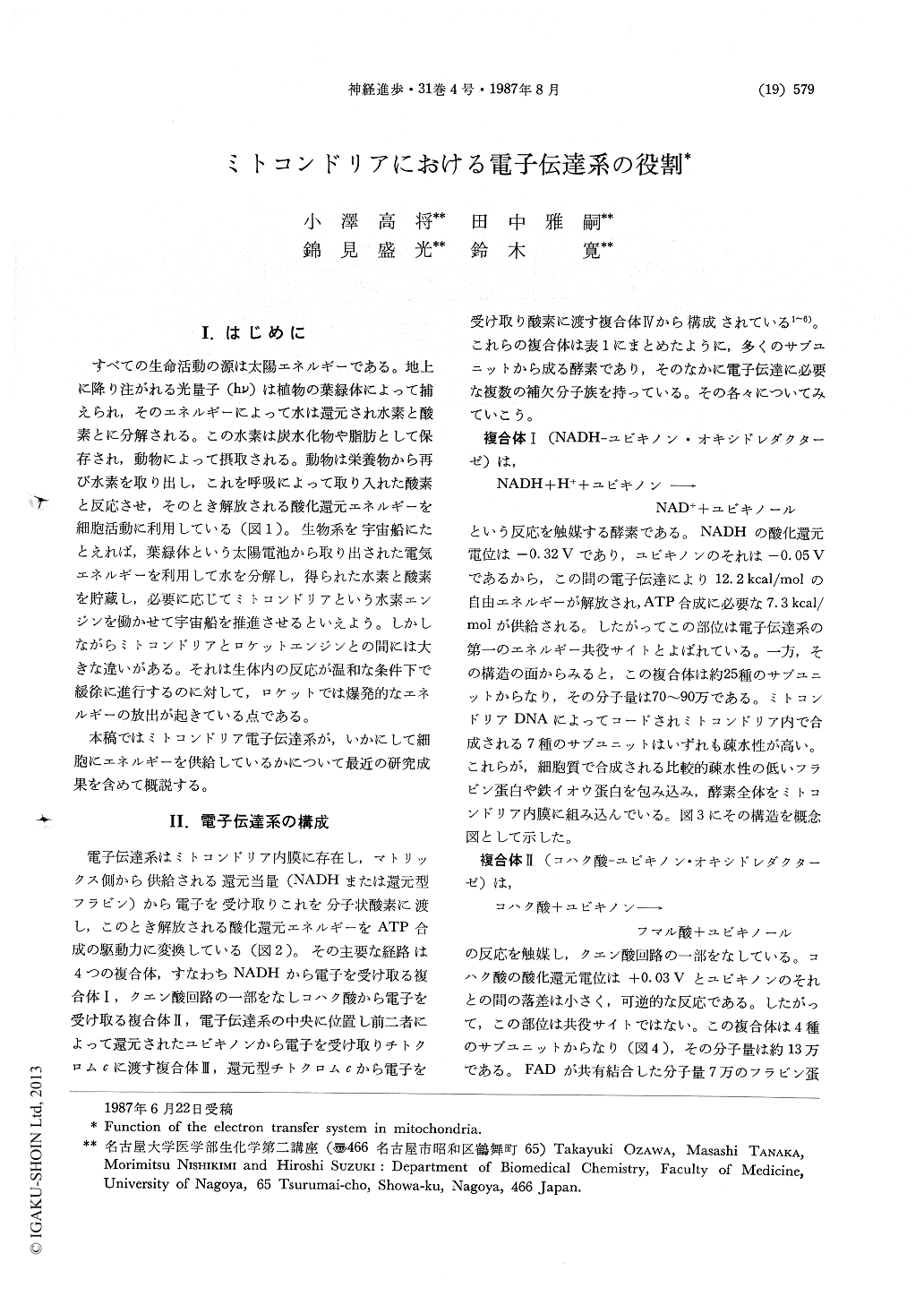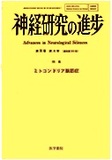Japanese
English
- 有料閲覧
- Abstract 文献概要
- 1ページ目 Look Inside
I.はじめに
すべての生命活動の源は太陽エネルギーである。地上に降り注がれる光量子(hv)は植物の葉緑体によって捕えられ,そのエネルギーによって水は還元され水素と酸素とに分解される。この水素は炭水化物や脂肪として保存され,動物によって摂取される。動物は栄養物から再び水素を取り出し,これを呼吸によって取り入れた酸素と反応させ,そのとき解放される酸化還元エネルギーを細胞活動に利用している(図1)。生物系を宇宙船にたとえれば,葉緑体という太陽電池から取り出された電気エネルギーを利用して水を分解し,得られた水素と酸素を貯蔵し,必要に応じてミトコンドリアという水素エンジンを働かせて宇宙船を推進させるといえよう。しかしながらミトコンドリアとロケットエンジンとの間には大きな違いがある。それは生体内の反応が温和な条件下で緩徐に進行するのに対して,ロケットでは爆発的なエネルギーの放出が起きている点である。
本稿ではミトコンドリア電子伝達系が,いかにして細胞にエネルギーを供給しているかについて最近の研究成果を含めて概説する。
The structural basis for the energy transduction in mitochondria was studied by multiple approa-ches. Firstly, the electron-transfer complexes were isolated from beef heart mitochondria, highly purified by hydrophobic chromatography and affi-nity chromatography, and crystallized into three dimensional crystals. Their structures were studied by electron microscopy and electron diffraction. Secondly, the complexes were resolved into their subunits and reconstituted from the components.Namely, the iron-sulfur protein, cytochrome b, cytocrome c1, ubiquinone-binding protein, and two core proteins were isolated from Complex III, and a part of its electron-transfer pathway was reconstituted from the components. We also isolated the ubiquinone-binding protein from Complex I, and characterized its function in electron transport and energy transduction. The antibodies raised against the complexes or the subunits were used to clone the human cDNA for cytochrome c1. The antibodies were also useful for analyzing the abnormality of subunit composition of the complexes in patients with mitochondrial cytopa-thies whose mitochondrial energy transduction was impaired. The molecular architecture of the mitochondria in the normal or pathological state would be elucidated by these approaches.

Copyright © 1987, Igaku-Shoin Ltd. All rights reserved.


